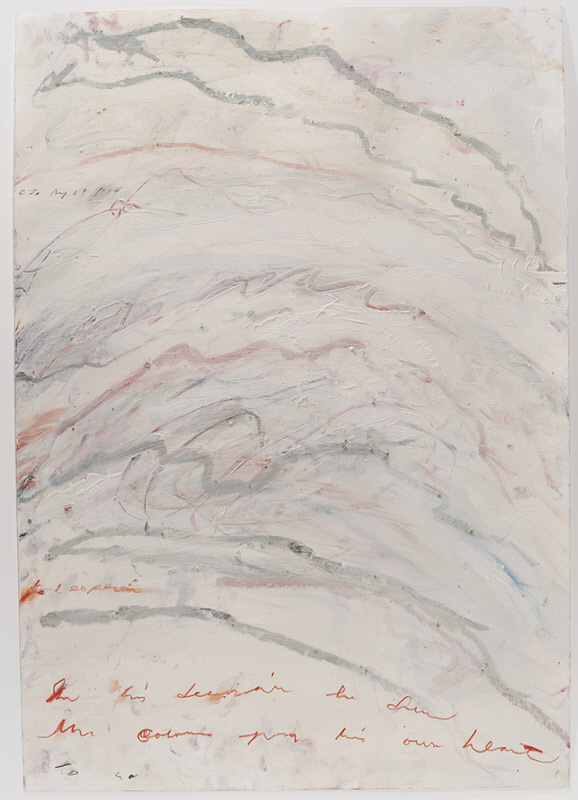Cy Twombly is known for his distinctive style of gestural paintings that merge qualities of Abstract Expressionism, Minimalism, and Conceptual art. His works are characterized by expressive marks and scribbles, and often feature poetic, sometimes cryptic, references woven into an artistic narrative. These two drawings, Untitled (To Leopardi), 1984, highlight a moment from one of Twombly’s sporadic departures from the canvas and into the realm of paper-based mediums.
In this work, Twombly engages with language and text to pay tribute to Italian scholar Giacomo Leopardi (1798–1837). Considered Italy’s first modern poet, Leopardi began his career writing philological works until entering a lyrical poetry phase in which he wrote his most influential works, including “L'Infinito,” a reflection on ideas of infinity and the limitations of human existence.
Bands of color in the two drawings are displayed against a textured surface crafted from layers of oil, crayon, and graphite. Rhythmic lines, a crucial component of Twombly’s oeuvre, are evident across the entire surface. Twombly commonly interrelated words, poetry, and visual images in his work. In both drawings, one can discover the phrase “In his despair he drew the colors from his own heart,” which Twombly scrawled with a reddish-orange crayon and positioned either at the top or bottom of each piece. This phrase, in tandem with the eulogistic title, suggests a transcendent dialogue between artist Twombly and poet Leopardi.
Twombly’s color choice was minimalist, featuring neutral colors such as white, black, and gray, with the more assertive dark orange vying for dominance. At times, colors are concealed behind multiple layers of oil. The abundance of hues and layers blend to form a mesmerizing haze that constitutes the work’s background. In the foreground, jagged, vibrant scribbles of colors combine with other forms to generate a visual poem. Despite their erratic appearance, the jagged lines traversing the piece follow a consistent pattern that suggests an underlying order within these seemingly disordered compositions.


